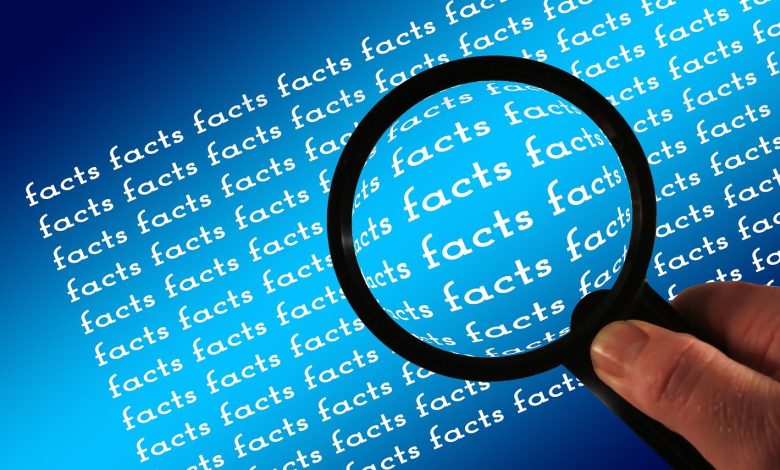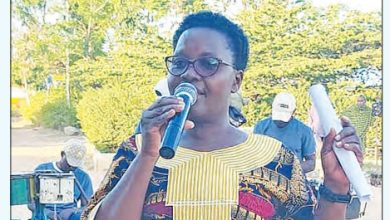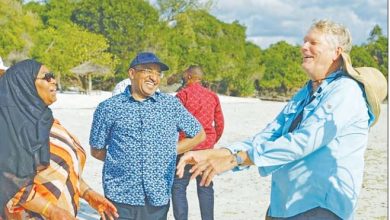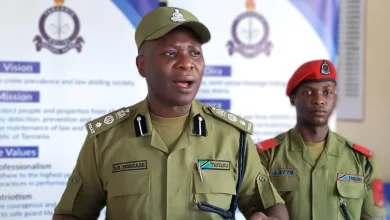Fighting falsehoods: Why fact-checking matters in election season

DAR ES SALAAM: AS the clock ticks towards Tanzania’s General Election, a new battlefront has emerged not in the polling stations or political rallies, but in the vast, fastmoving digital world of social media.
Platforms such as X (formerly Twitter), Facebook, Instagram and WhatsApp are increasingly becoming breeding grounds for false news, misinformation and disinformation that threaten to cloud voters’ judgement and distort the country’s democratic process.
Across these online spaces, Tanzanians are being bombarded with information that is not always what it seems. Fake news about candidates, exaggerated development promises and manipulated images or videos have become all too common.
Experts warn that unless the public, the media and authorities take deliberate action, these falsehoods could mislead voters and undermine the credibility of the election.
The growing wave of digital misinformation
Chief Executive Officer of Nukta Africa, Mr Nuzulack Dausen, says that digital revolution has made access to information easier than ever before, but also more dangerous when the information is false.
He emphasised that misinformation spreads faster and more widely than verified news, especially during political campaigns when emotions run high. “It is very important for every person to be capable of detecting fake news and to avoid sharing it,” Mr Dausen said in an interview with the ‘Daily News’.
He explained that false content is often generated by individuals or groups with malicious intent, targeting specific political figures or parties. Such content may appear genuine, especially when it uses the logos or design formats of trusted media houses such as Daily News or HabariLEO.
ALSO READ: How Mwinyi polishes the shining tourism star
“Sometimes fake news is shared only through WhatsApp and never appears on official social media accounts or in mainstream media,” he noted, adding that voters should always confirm suspicious stories directly through verified platforms.
According to Mr Dausen, fake news can be identified through several warning signs, including the misspelling of names, incorrect titles, grammatical errors or lack of credible sources.
He urged citizens to treat all unverified political content with caution and to use official data sources such as the National Bureau of Statistics (NBS) and the Independent National Electoral Commission (INEC) websites for factual verification.
The responsibility of media and journalists
Beyond public awareness, Mr Dausen insists that journalists and media houses have a crucial responsibility to ensure the accuracy of what they publish. He called on newsrooms to strengthen their internal factchecking systems and avoid publishing stories based on speculation or exaggerated claims made by candidates.
“If false news goes on air, in print or online unchecked, it risks misleading voters and influencing them to elect unqualified leaders,” he warned.
He further urged media outlets to develop dedicated programmes that promote factual reporting and teach citizens how to differentiate between credible information and falsehoods.
Similarly, he called on political parties, candidates and government agencies to issue timely clarifications whenever false information about them surfaces.
“Rapid clarification helps not only the public but also journalists who may otherwise be misled by fake content,” Mr Dausen said.
Fake news lacks attribution – and truth
For Ms Aurelia Venus, a digital content expert, the defining feature of fake news is its lack of attribution. Unlike professional journalism, which is built on verifiable sources, fake news often circulates anonymously or relies on “a friend of a friend” narratives.
“Fake news is just a collection of unverified claims designed to damage someone’s reputation, especially public figures,” she explained. Ms Venus warned that during the election period, the danger of misinformation intensifies as political supporters and online influencers amplify false content for personal or political gain.
She urged Tanzanians to rely on mainstream media outlets that follow ethical and professional standards, rather than depending on so-called citizen journalists who may lack training in news verification and accuracy.
“Citizen journalists are not necessarily bad, but most are untrained. People should rely on certified media houses that adhere to journalistic ethics,” she said.
Ms Venus further warned that fake news during elections can distort public opinion, create unnecessary panic and influence voters to make decisions based on lies rather than facts.
The threat of AI-driven deception
While misinformation is not new, the use of Artificial Intelligence (AI) has taken it to another level. Deepfakes AIgenerated videos or images that mimic real people are now being used to fabricate statements or actions by politicians.
According to Mr Edwin Soko, Chairperson of the Media Institute of Southern Africa Tanzania Chapter (MISATAN), this makes the 2025 election unlike any other in Tanzania’s history.
“Information disorders such as misinformation and disinformation are increasing every day. What we need first is to raise awareness among the public, not only among journalists,” Mr Soko said.
ALSO READ: Police, media strengthen pre-election partnership
He noted that AI tools are being misused by some individuals to manipulate images or create videos that appear genuine. When circulated widely, such deepfakes can easily damage reputations, spread confusion and undermine public confidence in democratic institutions.
“The public must learn to verify any information that seems suspicious, especially on WhatsApp, Instagram and X. Community engagement is key to enabling citizens to detect and reject false content before it causes harm,” he said.
Building resilience through collaboration
Mr Soko called for stronger collaboration among all stakeholders, including media owners, journalists, regulators and civil society to develop comprehensive awareness programmes on the dangers of misinformation.
He also urged Tanzania Communications Regulatory Authority (TCRA) to take firm action against individuals or organisations that deliberately produce and spread false information.
“The TCRA, as the body responsible for regulating electronic content, must ensure that those who violate cyber laws face appropriate punishment,” he said.
He added that media owners must also invest in building their reporters’ capacity for digital fact-checking, especially as social media continues to shape public opinion more than ever before.
“Equipping journalists with fact-checking skills will help prevent misinformation from slipping through editorial processes,” Mr Soko said.
The way forward: A collective duty
Experts agree that combating fake news is not the responsibility of journalists alone, it is a collective duty shared by every citizen. In today’s digital age, every social media user has the power to either stop or spread false information with a single click.
Mr Dausen believes that the solution lies in cultivating a culture of scepticism and verification among news consumers. Before sharing any news, he said, individuals should ask three questions: Is it from a credible source? Has it been verified by an official account?
“If the answer to any of those questions is no, then don’t share it,” he advised. Ms Venus added that the best defence against fake news is media literacy — the ability to critically evaluate the information one consumes.
Schools, universities and community organisations, she said, should incorporate basic media literacy training to build an informed and discerning society. Mr Soko, on his part, envisions a future where citizens, journalists and regulators work hand in hand to preserve truth in the digital space. “The more we educate people, the harder it becomes for fake news to thrive,” he concluded.





